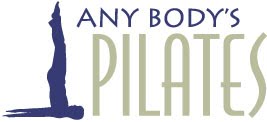Most people know that in order to lose weight, one must consume fewer calories than one burns. So the math on that equation means consume less or burn more than you have been, in order to lose weight. Many people, especially women, will go on a starvation diet, that seems successful early on, but suddenly stalls. When you starve your body, it goes into protective mode and retains fat for fuel. So, you need to eat enough to fuel your body. The best way to insure that fewer calories are consumed than burned is to eat a sensible, healthy diet in combination with regular exercise. Sometimes, working out is enough to cause an individual to rethink eating dessert or a second helping. After all, why work so hard to burn calories and then casually consume so many extra calories? That alone can contribute to weight loss, but can be difficult to maintain during the hectic holiday season.
 |
| Scissors |
I'm often asked if Pilates will help with weight loss. The answer is yes, although how much depends on the participant -- and not just because of the participant's diet. Researchers studied calories expended while performing six different Pilates mat exercises. They found that, on average, a 165-pound person burned 480 calories per hour during an advanced Pilates workout (comparable to walking 4.5 miles per hour); 390 calories per hour during an intermediate workout (comparable to basic stepping); and 276 calories per hour during a basic workout (comparable to moderate stretching). But the calories burned varied for each individual, leading the researchers to conclude, "Pilates mat workouts vary widely in energy cost depending on both the skill level/intensity of the workout and the particular exercise movement being performed. The advanced and intermediate workouts tested in this study appear to be of sufficient intensity to provide apparently healthy adult participants with health-fitness benefits."
What is the difference between a basic mat (276 calories burned per hour) and an advanced mat workout (480 calories burned per hour)? A basic mat class includes 18 exercises, while advanced mat class performs those 18 exercises with additional variations and more challenging positions, and adds 14 much more difficult exercises, for a total of 32 exercises. Clients are moving more quickly through the exercises, which will increase the caloric burn, each exercise has been made more challenging, there are additional variations, so it's not surprising that the calorie burn would be higher.
 |
| Rolling Like a Ball |
How to account for the variability between individual clients? There are many possibilities, including physical differences, level of effort, level of skill, etc. But one of the surprising things about Pilates is the more one knows, and the more advanced one becomes, the more difficult the workout can be -- and often, the individual determines the difficulty with their level of effort. While an advanced workout often appears more effortless to a casual observer, the client's exertion is much higher because he/she is controlling more muscles than a beginner. Many first-time clients end their session saying, "I barely got a workout." While that's debatable, chances are, the client wasn't really getting the full value of the exercises, because he/she didn't really understand what was required. Repetition helps the client become familiar with the exercises, and then the client can begin to understand what is required to properly perform each exercise. Each additional layer of complexity requires recruiting additional muscles throughout the body to work together to properly perform the exercises.
Pilates combined with a healthy diet can contribute to a successful weight loss plan. Clients should stick with their Pilates workout long enough to understand and feel the benefits before concluding that it's not a challenging workout. Because the more Pilates you know, the bigger the calorie burn.

